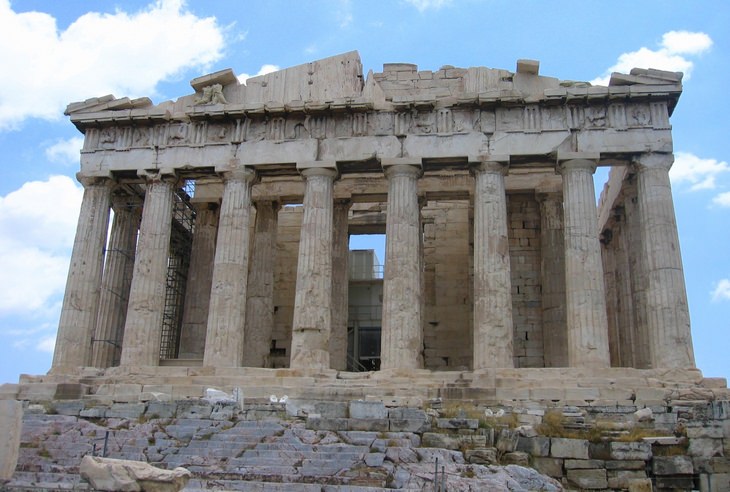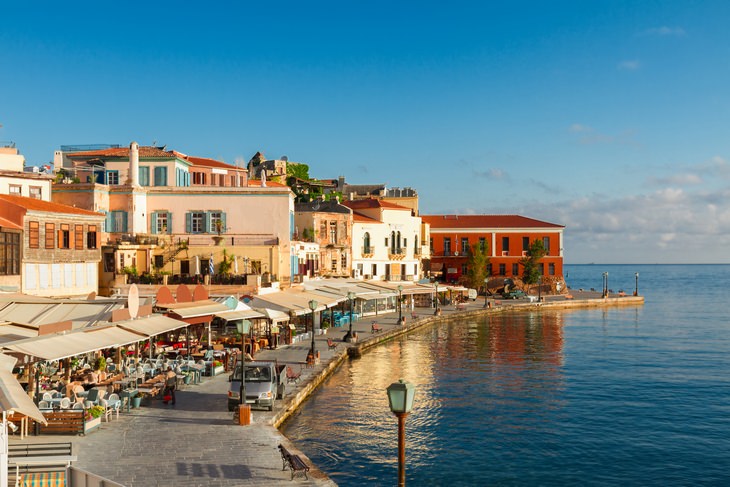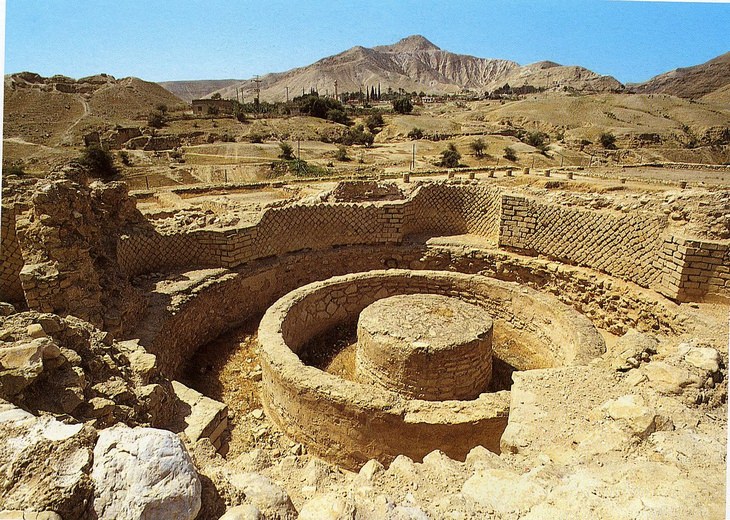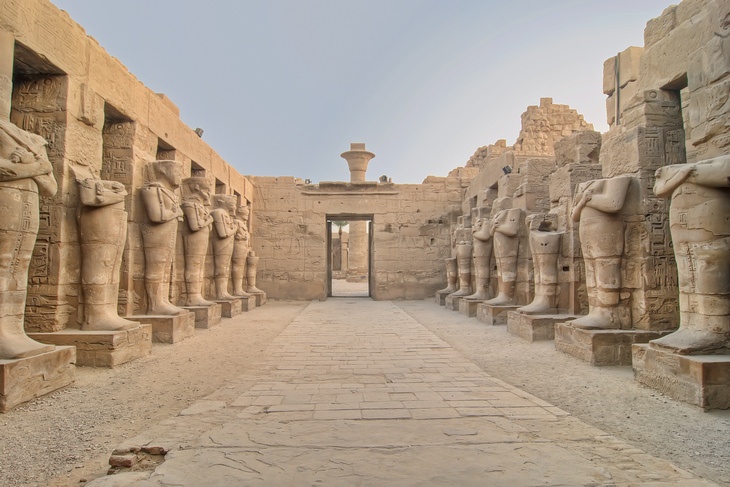

Yanshi, situated in the Henan Province of China, boasts a history stretching back more than 4,000 years. Believed to have been established during the Erlitou period, Yanshi is linked to the early Bronze Age and the Xia Dynasty (2100-1600 BC). Archaeological findings have revealed a highly developed civilization, complete with an intricate social structure and sophisticated urban planning. The city once served as a political and cultural center in ancient China, featuring impressive palaces and ceremonial buildings.
Over the years, Yanshi has been inhabited by various Chinese dynasties, witnessing considerable shifts in political and cultural landscapes. The city's extensive history includes the Shang Dynasty, which ruled from 1600 to 1046 BC, followed by the Western Zhou Dynasty from 1046 to 771 BC. In later years, Yanshi was also influenced by the Han, Tang, and Song Dynasties.
Numerous archaeological sites can be found in and around Yanshi, such as the Erlitou Relics and the Yanshi Shang City Ruins, which offer insights into China's ancient civilization. These sites provide a glimpse into the city's past, showcasing artifacts and ruins, including bronze vessels, jade objects, and architectural remains.
Today, Yanshi remains a thriving urban center, attracting tourists due to its rich history and archaeological sites. The city continues to evolve, integrating its ancient heritage with modern developments, ensuring its legacy endures well into the future.

Athens, the capital of Greece, is one of the oldest continuously inhabited cities globally, with a history surpassing 3,500 years. Named after the Greek goddess Athena, Athens is often referred to as the birthplace of Western civilization. The Mycenaeans first inhabited the city around 1,600 BC, developing it into a powerful city-state during the Classical period.
Over the centuries, Athens has been home to many renowned philosophers, artists, and politicians, including Socrates, Plato, and Aristotle, whose legacies still resonate today. The city's most famous landmark, the Acropolis, features the Parthenon, the Erechtheion, and other ancient structures that showcase the pinnacle of Classical Greek architecture.
Athens has experienced various historical periods, such as the Roman, Byzantine, and Ottoman eras, each leaving its mark on the city's architecture and culture. The city played a crucial role in the Greek War of Independence in the 19th century, eventually becoming the capital of the modern Greek state.
Today, Athens is a bustling metropolis that attracts visitors from around the world eager to experience its rich history, architectural wonders, and vibrant culture. The city serves as a hub for tourism, commerce, and the arts while preserving its ancient heritage.
 Source: Dennis Jarvis
Source: Dennis JarvisJerusalem, the capital of Israel, has a rich and intricate history dating back over 4,000 years. As a city considered holy by three major monotheistic religions—Judaism, Christianity, and Islam—Jerusalem has always been a focal point for religious and political activity. The Canaanites, who first settled there around 2,000 BC, were the earliest known inhabitants of the city. Since then, Jerusalem has been governed by numerous empires, including the Israelites, Babylonians, Romans, Byzantines, Islamic caliphates, and Crusaders, among others.
The city's long history is marked by periods of prosperity and devastation, as various factions sought to control it. The ancient Temple Mount, one of Jerusalem's most significant religious sites, has been destroyed and rebuilt several times throughout its history. It currently houses the Western Wall, which is a sacred site in Judaism, and the Dome of the Rock and Al-Aqsa Mosque, which are important Islamic landmarks.
Jerusalem's diverse past has shaped its unique cultural landscape, featuring an amalgamation of architectural styles and influences from the numerous civilizations that have called the city home. The Old City, a UNESCO World Heritage site, is divided into four quarters—Jewish, Christian, Muslim, and Armenian—and showcases a multitude of historic sites, such as the Church of the Holy Sepulchre, the Via Dolorosa, and the Tower of David.
Today, Jerusalem remains a city of great religious and historical significance, attracting millions of pilgrims and tourists each year. The city's complex political situation continues to be a subject of international debate, as it serves as the capital of both Israel and the State of Palestine. Despite these challenges, Jerusalem continues to develop and preserve its rich heritage for future generations.

Chania, located on the island of Crete in Greece, has a history spanning over 3,600 years. The city was first settled by the Minoans around 1,600 BC and later became a prominent center of the Mycenaean civilization. Chania's harbor, an essential component of its growth and prosperity, has been used since the Neolithic period, making it one of the oldest continuously inhabited ports in the Mediterranean.
Throughout its history, Chania has been conquered and influenced by various civilizations, such as the Romans, Byzantines, Venetians, and Ottomans. Each of these conquerors left their mark on the city, shaping its architecture, culture, and customs. The Venetians, for example, constructed a fortified wall, the iconic lighthouse, and numerous palaces and mansions, which continue to define Chania's cityscape.
Chania's Old Town, which is built around the historic harbor, offers a glimpse into the city's rich past. Narrow streets, colorful buildings, and historical sites, such as the Archaeological Museum of Chania, the Byzantine and Post-Byzantine Collection, and the Venetian Fortress of Firkas, all contribute to the city's charm.
Today, Chania is a vibrant and thriving city that seamlessly blends its ancient heritage with modern amenities. Tourism plays a crucial role in the local economy, as visitors flock to the city to explore its historical sites, picturesque streets, and beautiful beaches. The city remains committed to preserving its past while looking towards a prosperous future.
 Source: Salamandra123
Source: Salamandra123Jericho, situated in the West Bank, is considered one of the world's oldest continuously inhabited cities, with evidence of settlement dating back around 10,400 years. The city's earliest history is closely tied to the Natufian culture, which flourished during the Pre-Pottery Neolithic period. Jericho's strategic location near the Jordan River and its abundant natural resources, such as freshwater springs, made it an ideal location for early human settlement.
Jericho's rich history includes the construction of ancient fortifications, such as the Tower of Jericho, which is among the world's oldest known stone structures. Throughout its long history, the city has been conquered and influenced by various civilizations, including the Canaanites, Israelites, Assyrians, Babylonians, Persians, Greeks, Romans, Byzantines, and Islamic caliphates. Each of these cultures left its mark on the city's architecture, culture, and religious practices.
The ancient city of Jericho is home to numerous archaeological sites, such as Tell es-Sultan and Hisham's Palace, which offer insights into the city's distant past. These sites contain artifacts and ruins that shed light on the lives of the people who inhabited the region thousands of years ago. In addition, Jericho is associated with several biblical stories, such as the Battle of Jericho and the story of Zacchaeus, which further contribute to its historical and religious significance.
Today, Jericho is a vibrant city that continues to evolve while preserving its ancient heritage. The city is governed by the Palestinian Authority and faces challenges related to political instability and economic development. Despite these difficulties, Jericho remains an important center for archaeological research and tourism, attracting visitors interested in its unique history and cultural legacy.
 Source: Ai@ce
Source: Ai@ceDamascus, the capital of Syria, is one of the world's oldest continuously inhabited cities, with a history dating back over 3,100 years. The city's strategic location along trade routes between Mesopotamia and the Mediterranean made it an important center for commerce and cultural exchange throughout history. The Aramaeans, who first settled in the area around 1,500 BC, are considered the original founders of Damascus.
Over the centuries, Damascus has been ruled by numerous empires, including the Assyrians, Babylonians, Persians, Greeks, Romans, Byzantines, and Islamic caliphates. Each of these civilizations contributed to the city's architectural, cultural, and religious development. Notable examples include the ancient Roman Temple of Jupiter, the Umayyad Mosque, and the Azm Palace.
Damascus' Old City, a UNESCO World Heritage site, showcases the city's rich history and architectural heritage. Its narrow streets, bustling markets, and historical sites, such as the Straight Street (Via Recta) and the House of Ananias, attract visitors from around the world.
In recent years, the ongoing conflict in Syria has had a devastating impact on Damascus and its people. The city has experienced significant damage to its infrastructure and historical sites, and many residents have been displaced. Despite these challenges, efforts are underway to preserve and restore the city's ancient heritage and ensure a brighter future for its inhabitants.

Luxor, situated in Upper Egypt along the banks of the Nile River, is one of the world's oldest cities, with a history dating back over 5,200 years. The city was once the ancient Egyptian capital of Thebes and served as a vital political, religious, and cultural center during the New Kingdom (c. 1550-1070 BC).
Luxor is renowned for its magnificent temples, tombs, and monuments, which reflect the grandeur of ancient Egyptian civilization. The city's most famous sites include the Temple of Karnak, the Temple of Luxor, the Valley of the Kings, and the Valley of the Queens. These monuments, adorned with intricate carvings and stunning artwork, showcase the skill and craftsmanship of ancient Egyptian builders and artisans.
Throughout its long history, Luxor has been ruled by various empires, including the Greeks, Romans, Byzantines, and Islamic caliphates. Each of these conquerors contributed to the city's architectural and cultural development, leaving their mark on its monuments and traditions.
Today, Luxor remains a vital center for archaeological research, tourism, and cultural preservation. The city is committed to safeguarding its ancient heritage while promoting sustainable development and economic growth. As a major tourist destination, Luxor attracts millions of visitors each year who come to explore its awe-inspiring monuments and delve into the fascinating history of ancient Egypt.